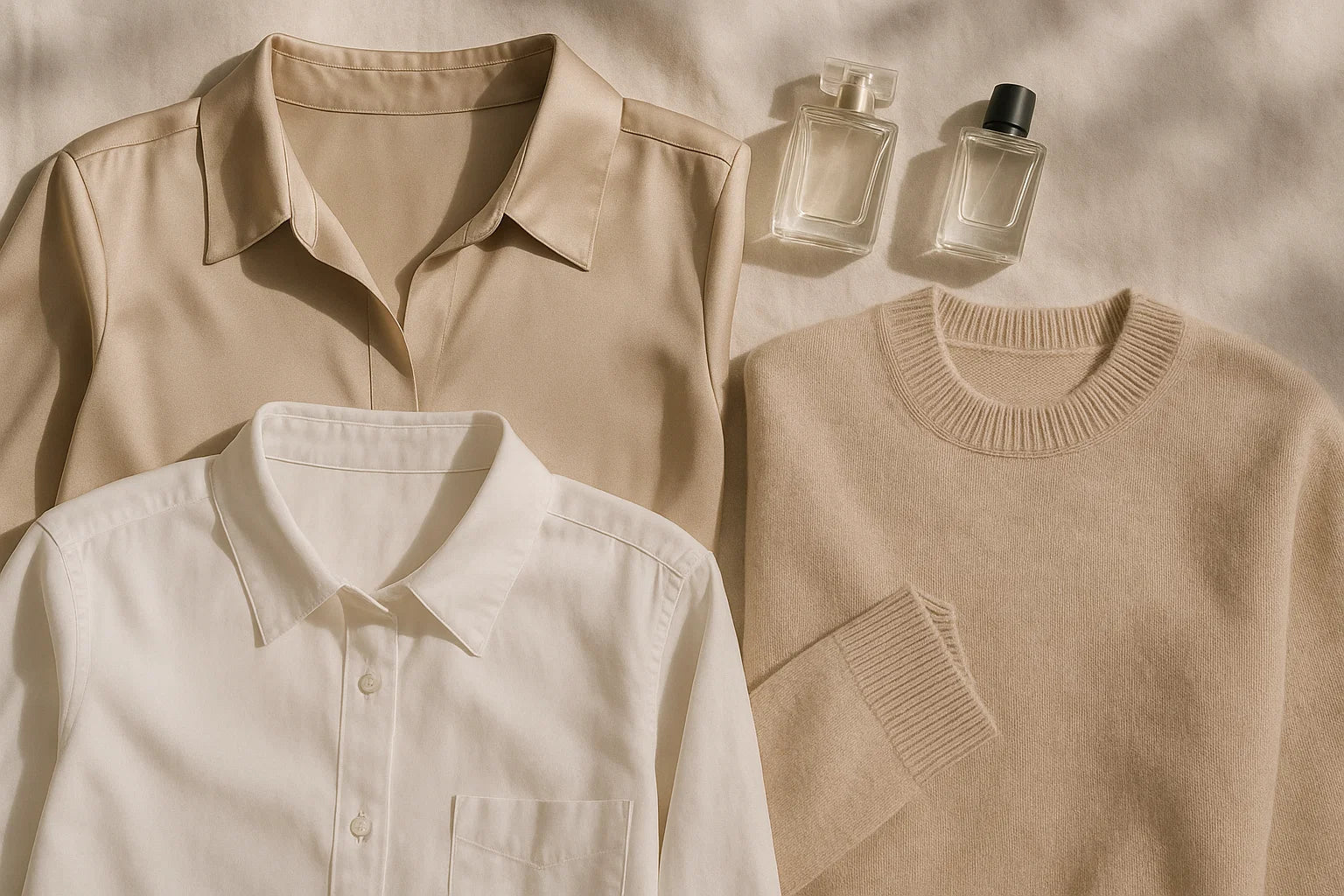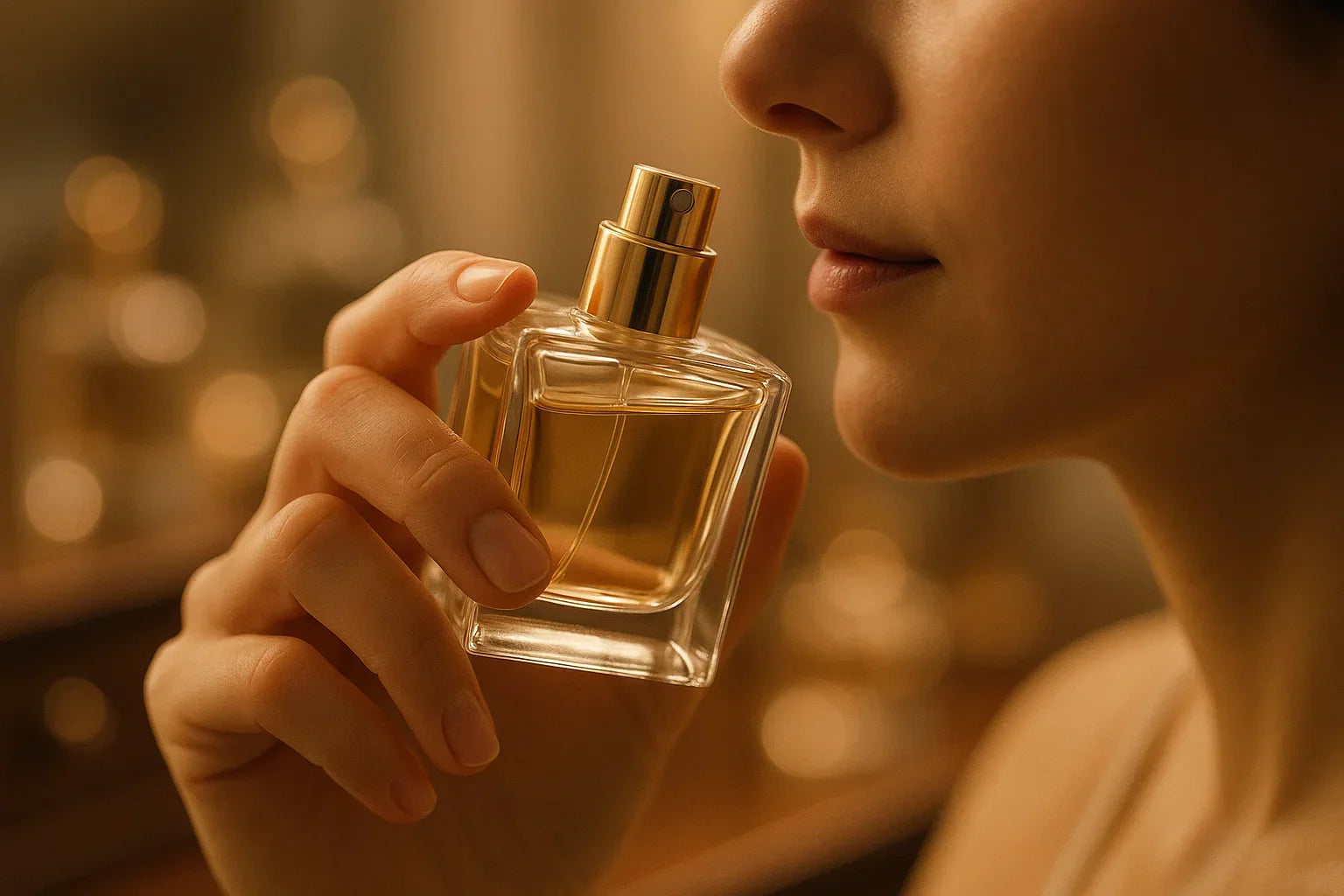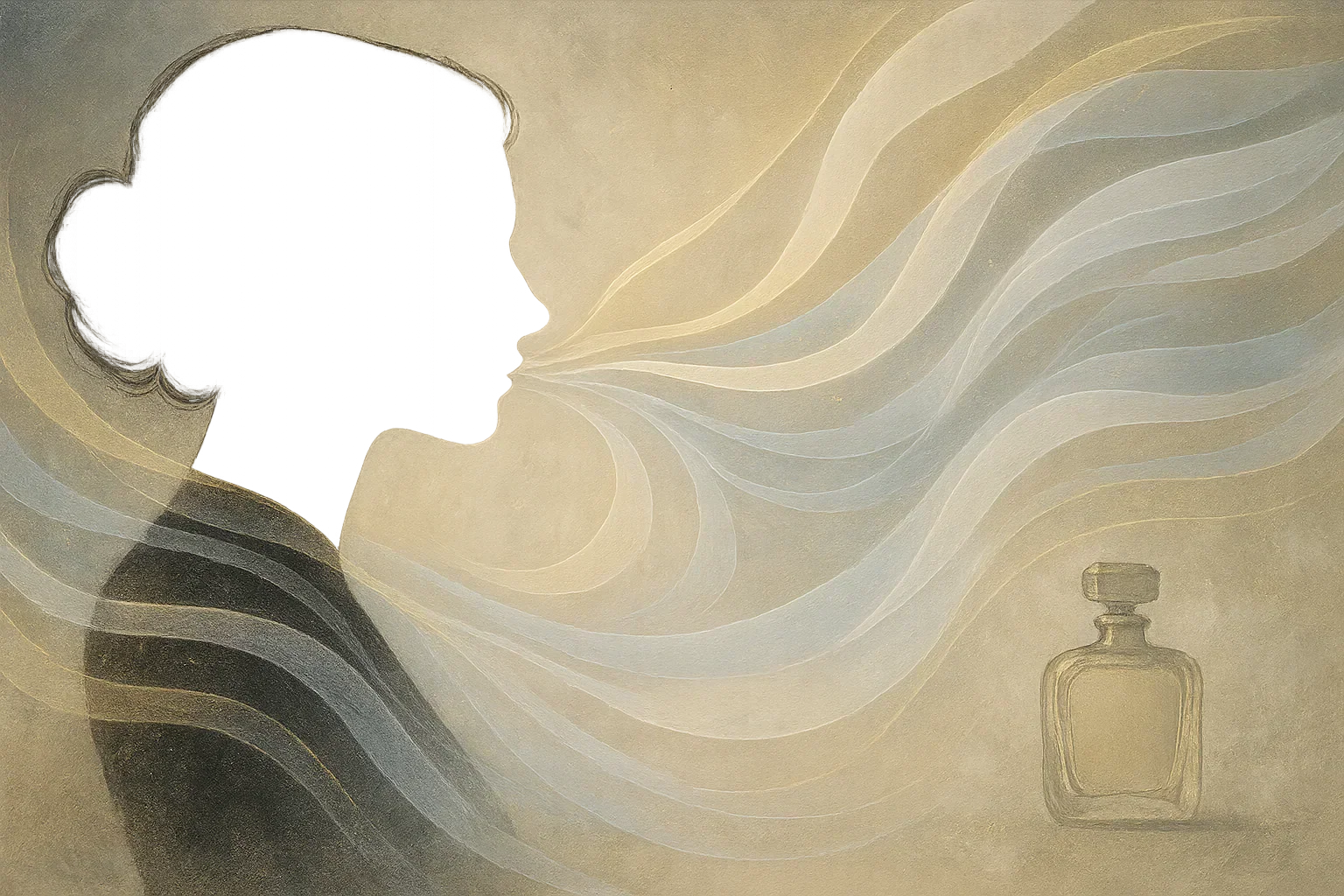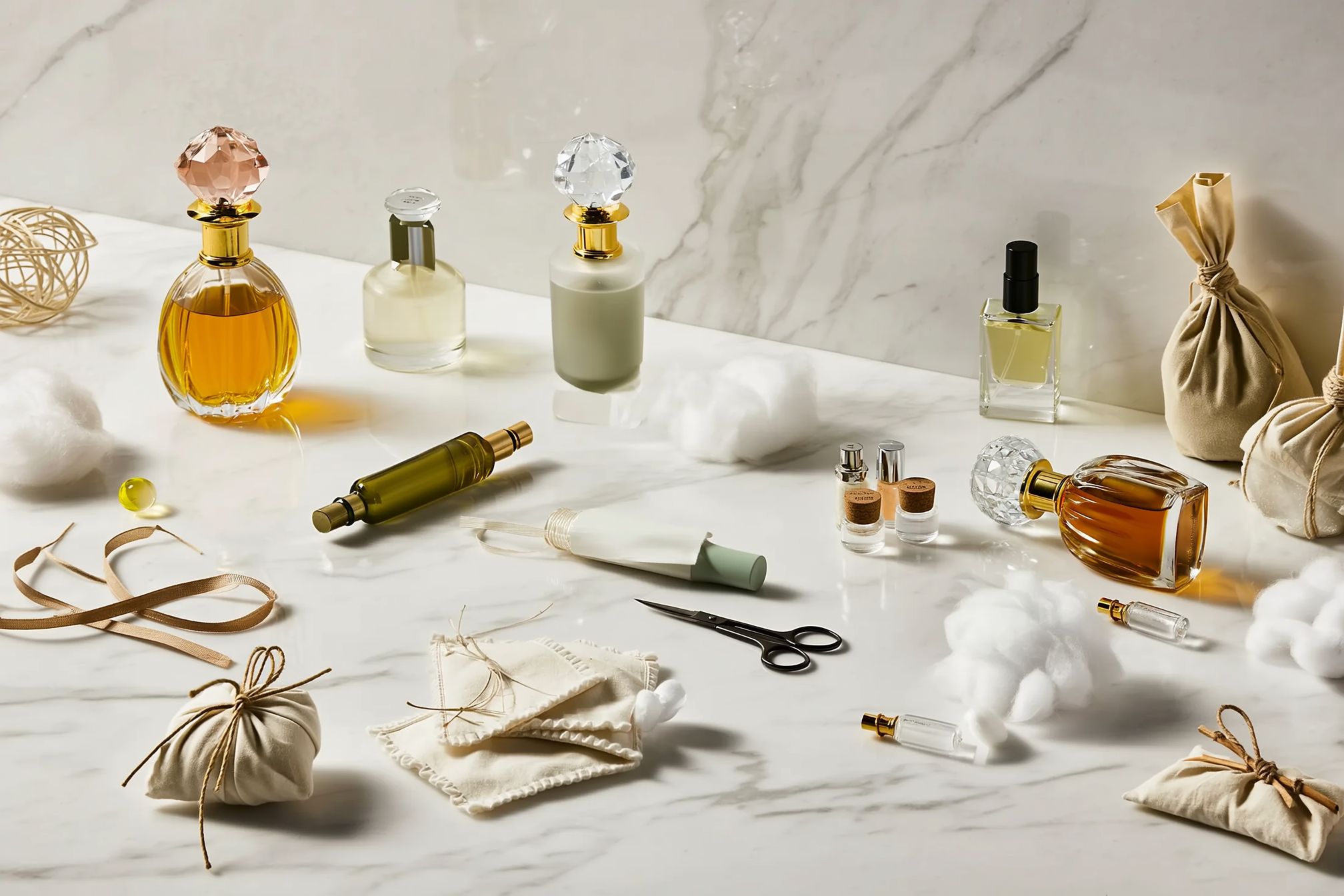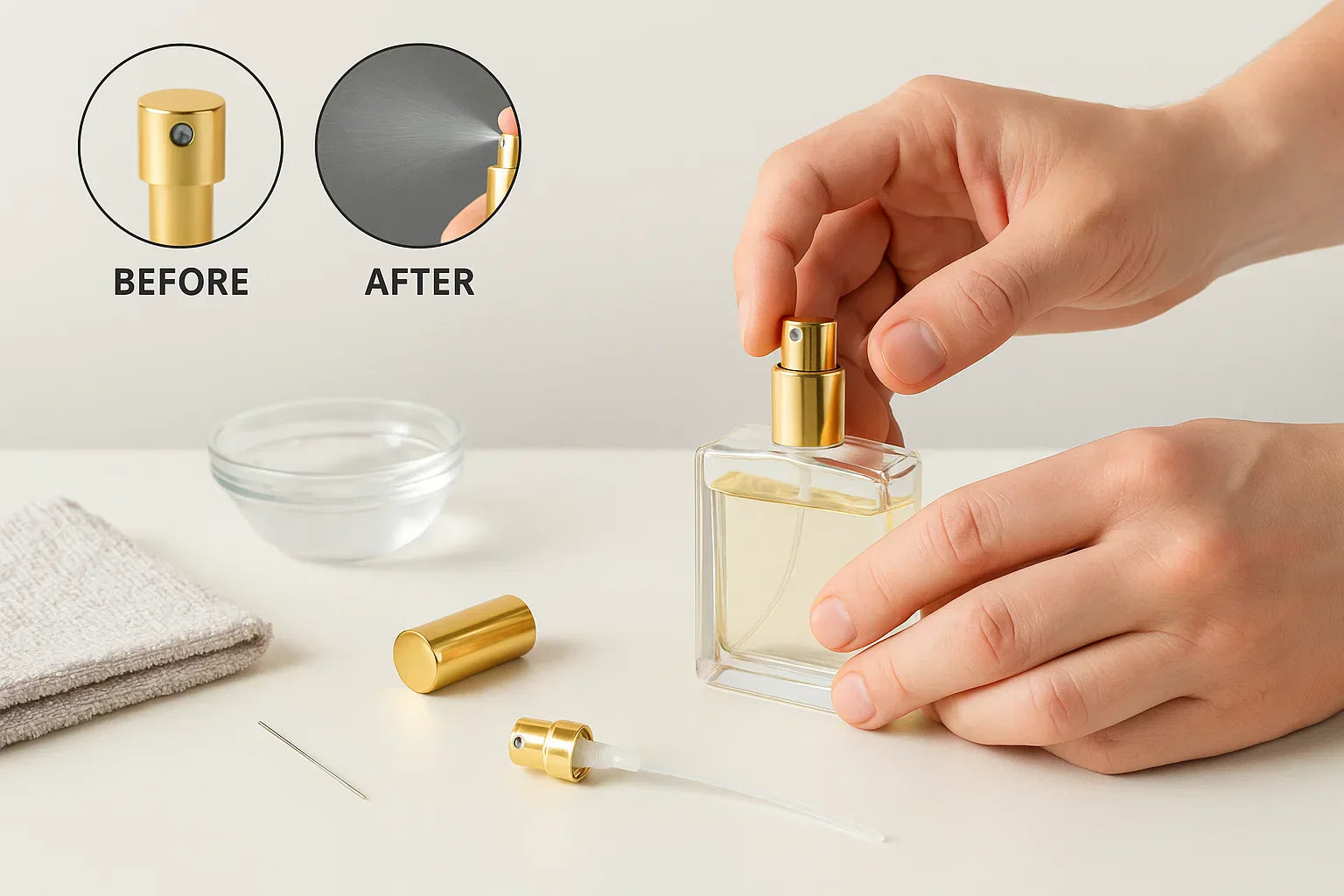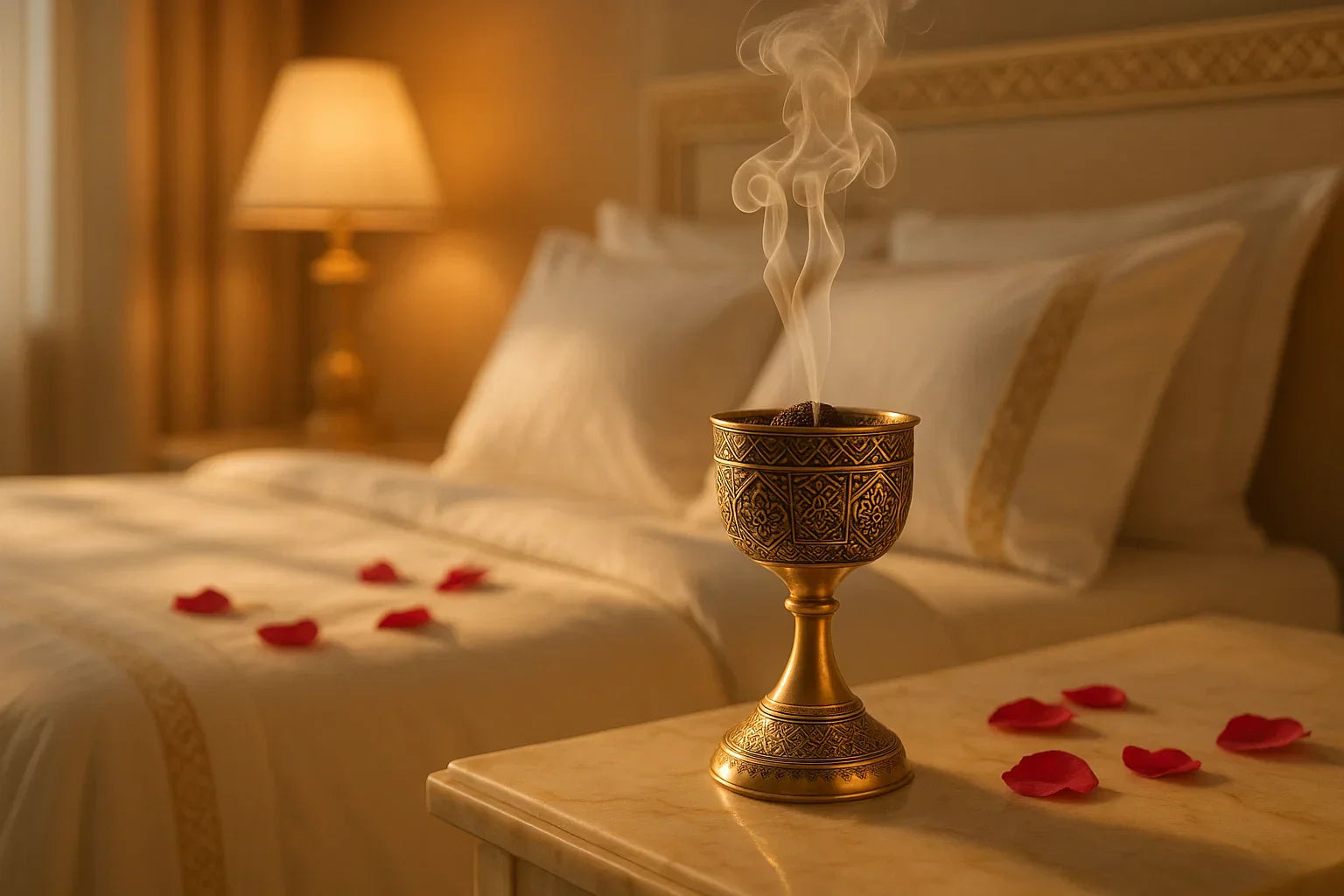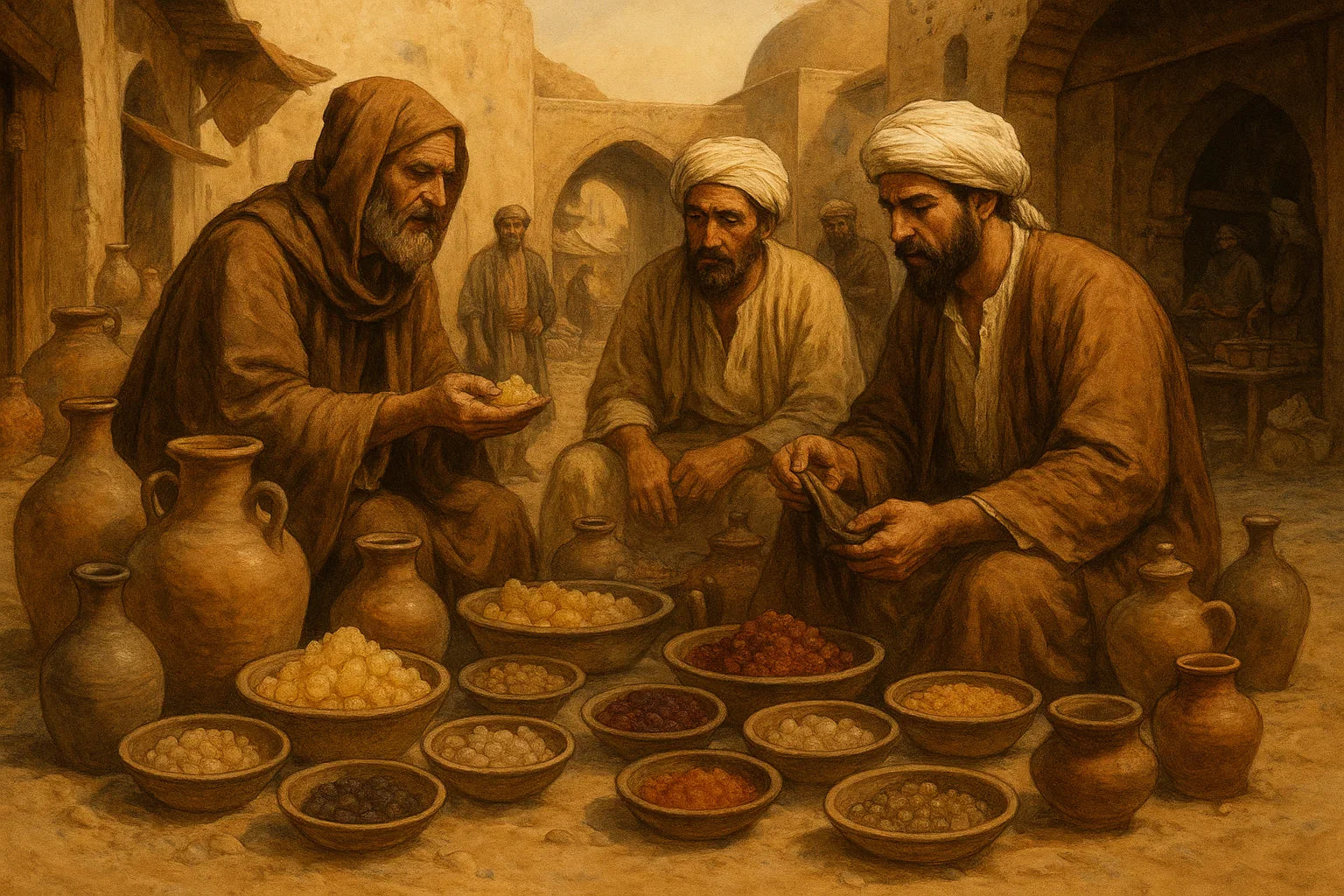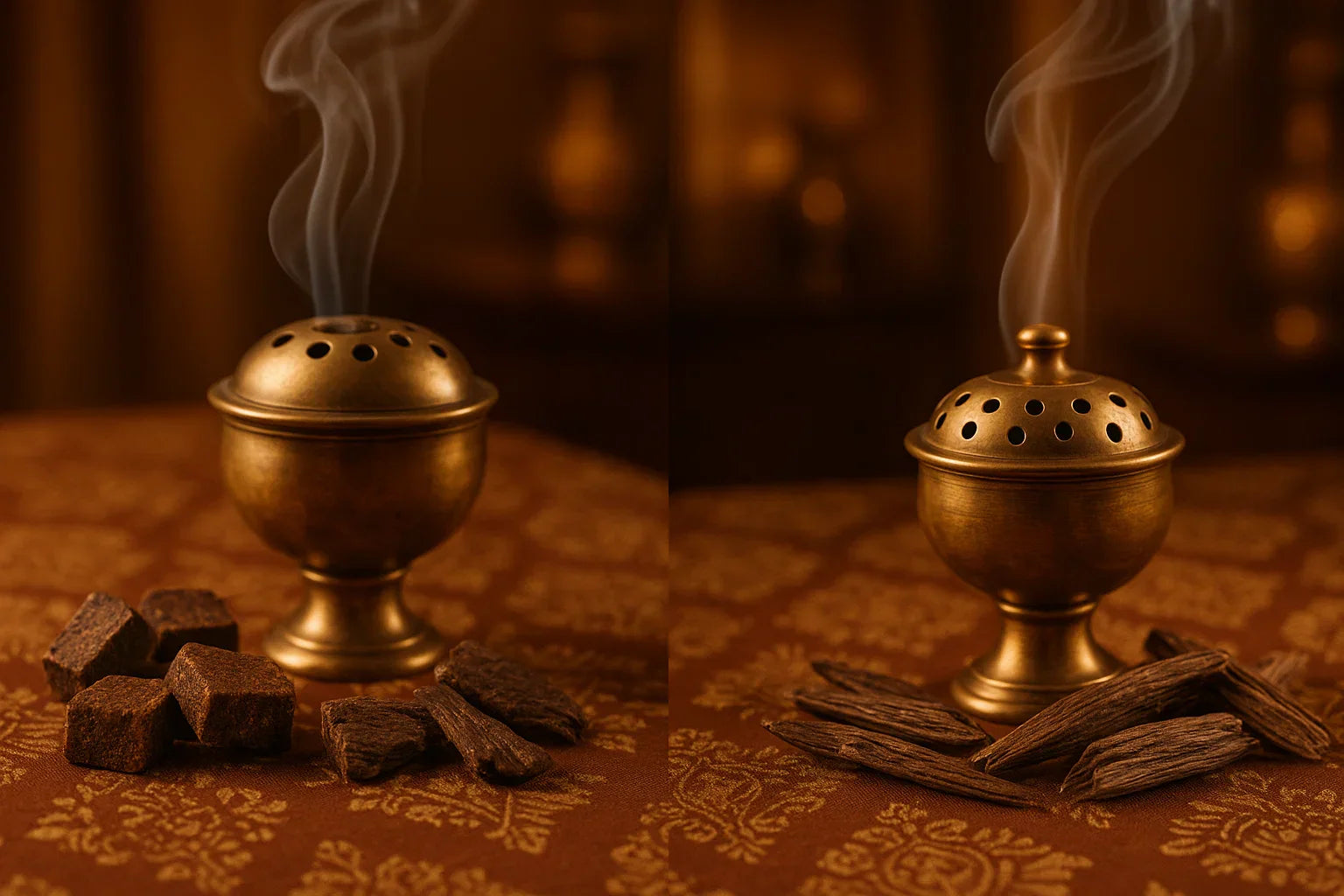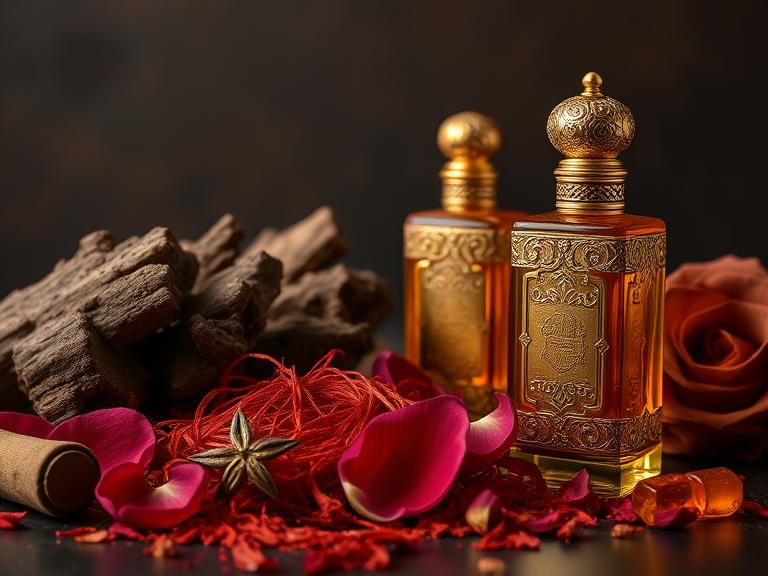
What Makes Middle Eastern Perfumes Different?
Introduction
The world of perfumery is vast and diverse, but few fragrance traditions captivate the senses quite like those from the Middle East. When you encounter a Middle Eastern perfume, the difference is immediately apparent – stronger, longer-lasting, and with a complexity that tells ancient stories through scent. These distinctive fragrances have gained global recognition for their depth and character, but what exactly sets them apart from their Western counterparts? The unique ingredients, traditional techniques, and cultural significance create an olfactory experience unlike any other. This comprehensive guide explores the distinctive elements that make Middle Eastern perfumes a treasured art form and sensory journey.
The Historical Significance of Middle Eastern Perfumery

The art of perfumery has deep roots in the Middle East, dating back thousands of years. Unlike Western perfumery, which gained prominence in the late 19th century, Middle Eastern cultures have been developing perfumes since ancient civilizations flourished along trade routes like the Silk Road.
Ancient Mesopotamians, Egyptians, and later Islamic civilizations refined the art of capturing fragrance, developing techniques that would eventually influence perfumery worldwide. From the royal courts of Persian emperors to the palaces of Arabian sheikhs, perfumes were considered precious luxuries and symbols of status.
What truly distinguished Middle Eastern perfumery was its early mastery of extraction methods. While European perfumery relied primarily on alcohol-based formulations, Middle Eastern perfumers pioneered techniques like steam distillation and enfleurage, creating concentrated oils that preserved the essence of natural ingredients more effectively.
This rich historical background continues to influence modern Middle Eastern perfumery, maintaining traditional practices while embracing innovation—creating fragrances that honor their heritage while appealing to contemporary sensibilities.
Key Ingredients that Define Arabic Perfumes

Oud: The Liquid Gold of Perfumery
Perhaps no ingredient exemplifies Middle Eastern perfumery more than oud (also known as agarwood). This resinous heartwood forms in Aquilaria trees when they become infected with a specific type of mold, creating one of the most expensive raw materials in perfumery.
Oud's distinctive profile—woody, warm, sweet, and slightly animalic—forms the foundation of many Middle Eastern fragrances. While Western perfumery has only recently embraced oud, it has been a cornerstone of Arabic perfumes for centuries.
The complexity of oud lies in its multifaceted nature. High-quality oud can simultaneously convey notes of leather, honey, spices, and earthiness—a complete fragrance profile in a single ingredient. This complexity explains why oud perfumes often have remarkable depth compared to many Western counterparts.
Amber and Musk: The Soul of Oriental Fragrance Notes
Amber and musk represent the warm, sensual heart of Middle Eastern perfumes. Unlike the light, fresh openings common in Western fragrances, Middle Eastern perfumes embrace these rich base notes as central characters rather than supporting elements.
Traditional ambergris (a rare substance from sperm whales) has historical significance in Middle Eastern perfumery, though modern amber accords typically combine labdanum, vanilla, and benzoin to create that distinctive warm, sweet, resinous quality. Similarly, musk—originally derived from the musk deer but now replicated with synthetic alternatives—provides the sensual, skin-like quality that gives Arabic perfumes their intimate character.
The liberal use of these base notes creates the impressive longevity for which Middle Eastern perfumes are known. While a typical Western fragrance might fade within hours, a quality Arabic perfume can last from morning until night—and sometimes even longer.
Rose and Jasmine: Flowers of the Desert
Floral notes in Middle Eastern perfumes differ significantly from their treatment in Western fragrances. The Taif rose from Saudi Arabia and Damask rose from Syria are prized for their intense, rich profiles—far more concentrated than the lighter roses used in European perfumery.
Similarly, Middle Eastern jasmine tends to be headier and more indolic (having a certain animalic quality) than its representation in Western fragrances. These flowers aren't treated as delicate, ethereal notes but rather as bold, opulent components that can stand alongside powerful ingredients like oud and amber.
Spices and Exotic Elements
The incorporation of exotic spices sets Middle Eastern perfumes apart from their Western counterparts. Saffron—one of the world's most expensive spices—often appears in luxury Arabic fragrances, adding a distinctive leathery-metallic warmth.
Other common spice elements include:
- Cardamom, with its unique balance of cooling and warming properties
- Cinnamon, providing sweet warmth
- Clove, adding depth and complexity
- Black pepper, offering subtle heat and sparkle
These spices create the multidimensional experience that makes Middle Eastern perfumes so engaging and distinctive.
Traditional Perfume-Making Techniques

Attar: The Ancient Art of Oil-Based Perfumery
One of the most significant differences between Middle Eastern and Western perfumery lies in their base. While Western fragrances typically use alcohol as a carrier, traditional Middle Eastern perfumes—known as attars—are oil-based.
Attars are created through a meticulous process of steam distillation, where botanical materials are processed and the essential oils are captured in a base of sandalwood oil or other carrier oils. This technique creates concentrated fragrances that interact differently with the skin than alcohol-based perfumes—evolving more slowly and lasting significantly longer.
The absence of alcohol makes attars particularly appealing to those who prefer alcohol-free fragrances, whether for religious reasons or personal preference. The oil base also creates a more intimate scent profile that stays closer to the skin rather than projecting widely, encouraging the traditional Middle Eastern custom of close greeting.
Layering: The Art of Personal Fragrance Creation
Western perfumery emphasizes the concept of the "finished" fragrance—a complete composition meant to be worn alone. In contrast, Middle Eastern perfume tradition embraces layering multiple fragrances to create a personalized scent profile.
This layering often begins with scented oils applied directly to the skin, followed by spray perfumes, and sometimes completed with exposure to bakhoor (scented wood chips burned on charcoal). This approach to fragrance allows for personal expression and ensures that no two individuals smell exactly alike, even when using the same products.
The art of layering perfumes requires understanding how different notes interact and complement each other—knowledge passed down through generations in Middle Eastern families.
The Distinctive Characteristics of Middle Eastern Fragrances
Sillage and Longevity: The Enduring Presence
Perhaps the most immediately noticeable difference between Middle Eastern and Western perfumes is their performance. Arabic fragrances are renowned for their impressive sillage (the trail of scent left behind) and extraordinary longevity.
This endurance stems from several factors:
- Higher concentration of fragrance oils (often 20-30% compared to 15-20% in Western eau de parfums)
- The predominance of base notes like oud, amber, and musk
- The oil-based formulations that bind to skin more effectively
- The use of fixatives like frankincense that extend wear time
While a typical Western fragrance might require reapplication throughout the day, a quality Middle Eastern perfume often strengthens over time as body heat activates its complex layers.
Complexity and Evolution: The Journey of Scent
Western perfumery often follows a predictable structure of top, middle, and base notes that unfold in a linear progression. Middle Eastern perfumes, however, typically offer a more complex evolution on the skin.
Rather than a straightforward development from fresh opening to sweet dry-down, Arabic fragrances tend to reveal different facets throughout wear. A quality Middle Eastern perfume might reveal new dimensions hours into wear—surprising the wearer with shifts between smoky, sweet, spicy, and resinous qualities that weren't apparent at first application.
This complexity stems from the use of natural materials with multifaceted profiles and traditional blending techniques that prioritize transformation over consistency.
Bold Character: Unapologetic Intensity
While Western perfumery has increasingly embraced light, fresh, and understated compositions, Middle Eastern fragrances celebrate boldness and intensity. These perfumes aren't designed to whisper but to make a statement—proclaiming their presence with confidence.
This characteristic intensity stems from cultural attitudes toward fragrance. In Middle Eastern tradition, a beautiful scent is meant to be noticed and appreciated, not hidden away as a private experience. This philosophy leads to fragrances that embrace their power rather than diluting it for subtlety's sake.
The Cultural Importance of Scent
Fragrance as Hospitality and Personal Identity
In Middle Eastern cultures, fragrance extends far beyond personal adornment—it's a fundamental aspect of hospitality and social interaction. Guests are often welcomed with perfume and incense, creating memorable olfactory experiences that complement visual and culinary aspects of hospitality.
The giving of perfume as a gift carries deep significance in Arabic cultures. Unlike in Western contexts, where fragrance might be seen as a somewhat impersonal gift, in the Middle East, a carefully selected perfume represents a thoughtful understanding of the recipient's personality and taste.
On a personal level, many individuals in the Middle East develop signature scent combinations that become part of their identity—as recognizable as their appearance or voice to those who know them well.
Ritual and Tradition: Beyond Mere Accessory
The use of fragrance in the Middle East is often ritualistic, with specific scents associated with particular occasions and ceremonies. From religious celebrations to weddings, specific fragrance traditions mark important life moments.
The burning of bakhoor—scented wood chips on charcoal—represents a perfect example of this ritualistic approach. Used to scent homes and clothing, this practice turns fragrance into an immersive experience rather than a simple accessory.
Similarly, the use of luban (frankincense) in many Middle Eastern homes carries cultural and spiritual significance that transcends mere pleasant scenting.
How to Incorporate Middle Eastern Perfumes into Your Collection
Understanding Concentration and Application
For those accustomed to Western fragrances, adapting to Middle Eastern perfumes requires understanding their concentrated nature. While you might liberally apply a typical eau de toilette, Arabic perfumes generally require just a few strategic touches:
- Apply to pulse points where body heat will activate the fragrance
- Consider "scent layering" with complementary products
- Start with a lighter application until you understand how the fragrance develops on your skin
- Remember that oil-based attars are typically applied directly to the skin with the bottle's applicator stick
Building Your Middle Eastern Fragrance Wardrobe
A well-rounded Middle Eastern perfume collection might include:
- A traditional oud-based fragrance for special occasions and evening wear
- A lighter rose-oud combination for daytime elegance
- A saffron-forward spicy blend for warmth and complexity
- An amber-based fragrance for cozy comfort
- A simple attar for layering and versatility
When starting your collection, consider exploring the differences between French and Arabic perfumes to understand how these traditions complement each other.
Seasonal Considerations
While Western fragrance advice often suggests lighter scents for summer and heavier ones for winter, Middle Eastern perfumes follow somewhat different principles:
- Spring/Summer: Opt for fragrances with prominent rose, citrus, or lighter woods
- Fall/Winter: Embrace the full intensity of oud, amber, and spice-forward compositions
- Year-round: Incense-based fragrances often transition well between seasons
Middle Eastern Perfume Etiquette and Application
The Art of Not Overwhelming
Despite their intensity, Middle Eastern perfumes should enchant rather than overwhelm. The goal is to create an aura that invites others closer, not one that announces your presence from across the room.
To achieve this balance:
- Apply perfume oils to "hot spots" where they will warm and diffuse naturally
- Consider the setting—what's appropriate for a special evening might be too much for an office environment
- Allow fragrances time to settle before adding more—many Middle Eastern perfumes bloom over time
Complementary Practices
In Middle Eastern tradition, fragrance extends beyond liquid perfume. Consider these complementary practices:
- Bakhoor exposure: Allowing clothing to absorb scented smoke from bakhoor creates a lasting fragrance effect
- Scented accessories: Perfuming prayer beads, scarves, or jewelry with attar extends the fragrance experience
- Layered approach: Combining scented bath products, oils, and spray perfumes creates a multidimensional scent profile
Frequently Asked Questions
Are Middle Eastern perfumes suitable for sensitive skin?
Many traditional oil-based attars are actually gentler on sensitive skin than alcohol-based Western fragrances, which can be drying and irritating. However, as with any fragrance, individual sensitivities to specific ingredients may vary. Performing a patch test is always recommended.
How can I identify authentic Middle Eastern perfumes?
Authentic Middle Eastern fragrances typically feature:
- Oil-based formulations or high concentration in spray perfumes
- Prominence of traditional ingredients like oud, amber, rose, and saffron
- Impressive longevity and moderate to strong projection
- Hand-blown glass bottles (for premium offerings) or decorated metal containers for traditional attars
For more detailed guidance, explore our guide on how to check if a perfume is original or fake.
Are Middle Eastern perfumes gender-specific?
Unlike Western perfumery with its strict gender divisions, traditional Middle Eastern fragrance culture is more fluid. Many classic compositions are considered unisex, with individuals choosing fragrances based on personal preference rather than marketing categories. This approach offers greater freedom for personal expression through scent.
Where can I find authentic Middle Eastern perfumes?
While specialized boutiques offer the best selection and expertise, many online retailers now provide access to authentic Middle Eastern perfumes. When shopping online, look for retailers who specialize in Arabic fragrances and offer detailed descriptions of notes and ingredients.
Conclusion

The distinctive character of Middle Eastern perfumes—their intensity, complexity, and cultural significance—offers a fascinating counterpoint to Western fragrance traditions. From the precious oud and exotic spice combinations to the oil-based formulations and ritualistic applications, these fragrances represent not just scents but stories, traditions, and expressions of identity.
By understanding what makes Middle Eastern perfumes different, you can appreciate their unique qualities and perhaps incorporate some of these magnificent fragrances into your own collection. Whether you're drawn to the mysterious depth of oud, the sensual embrace of amber and musk, or the exotic allure of saffron and rose, the world of Arabic perfumery offers olfactory treasures waiting to be discovered.
Explore our collection at Wani Perfumes to begin your journey into the enchanting world of Middle Eastern fragrances—where every bottle contains not just a scent, but centuries of tradition and artistry.
